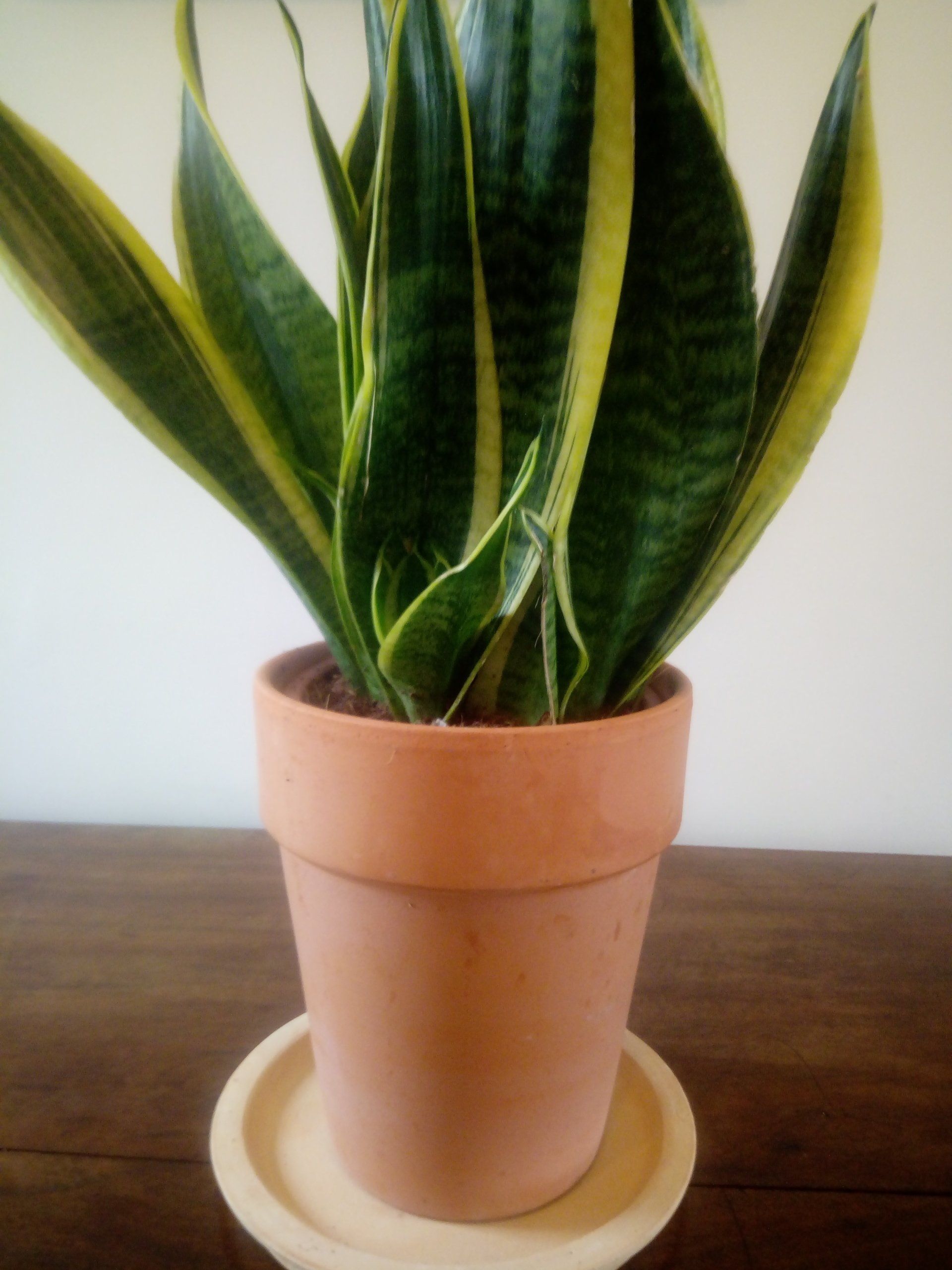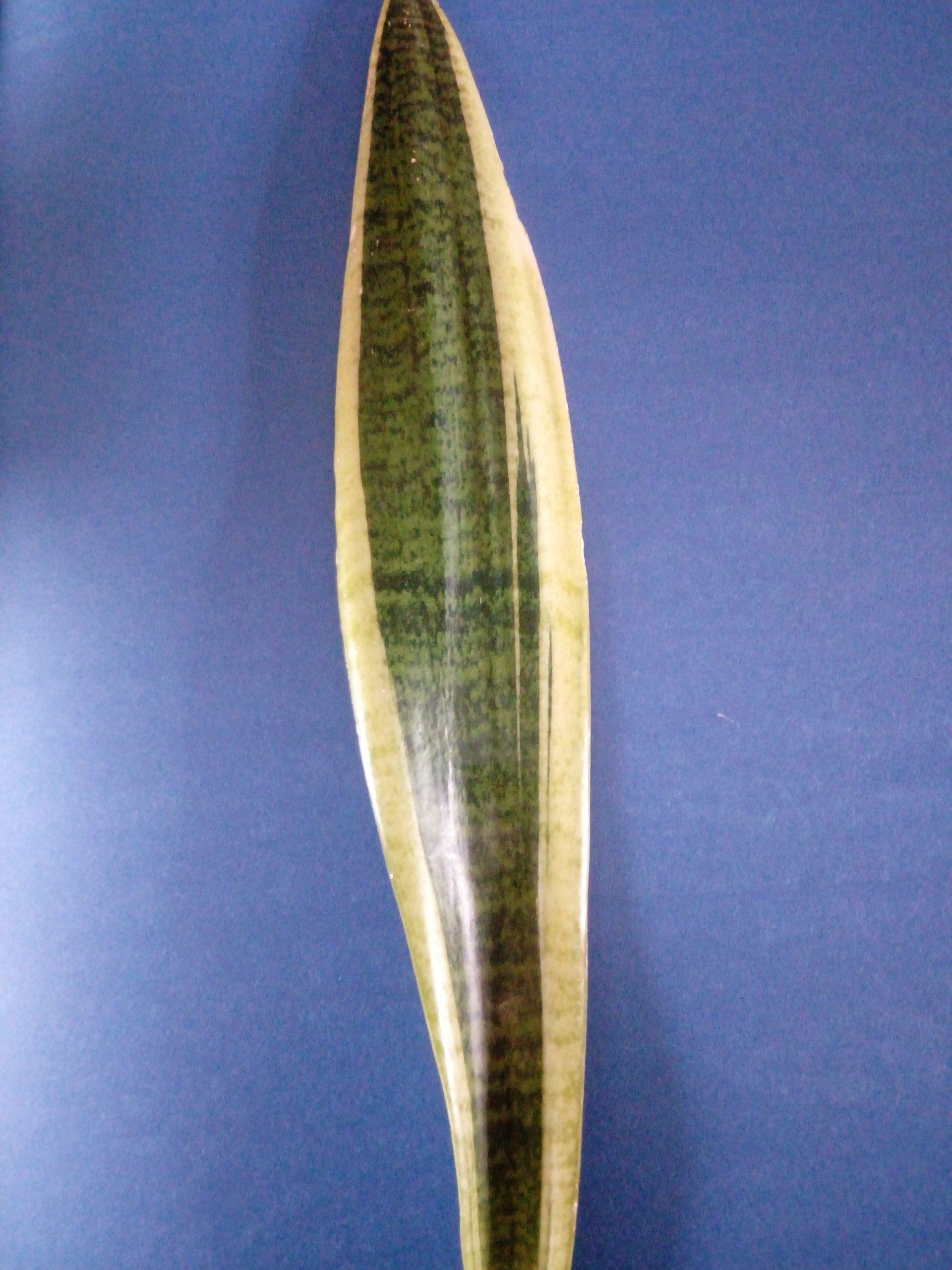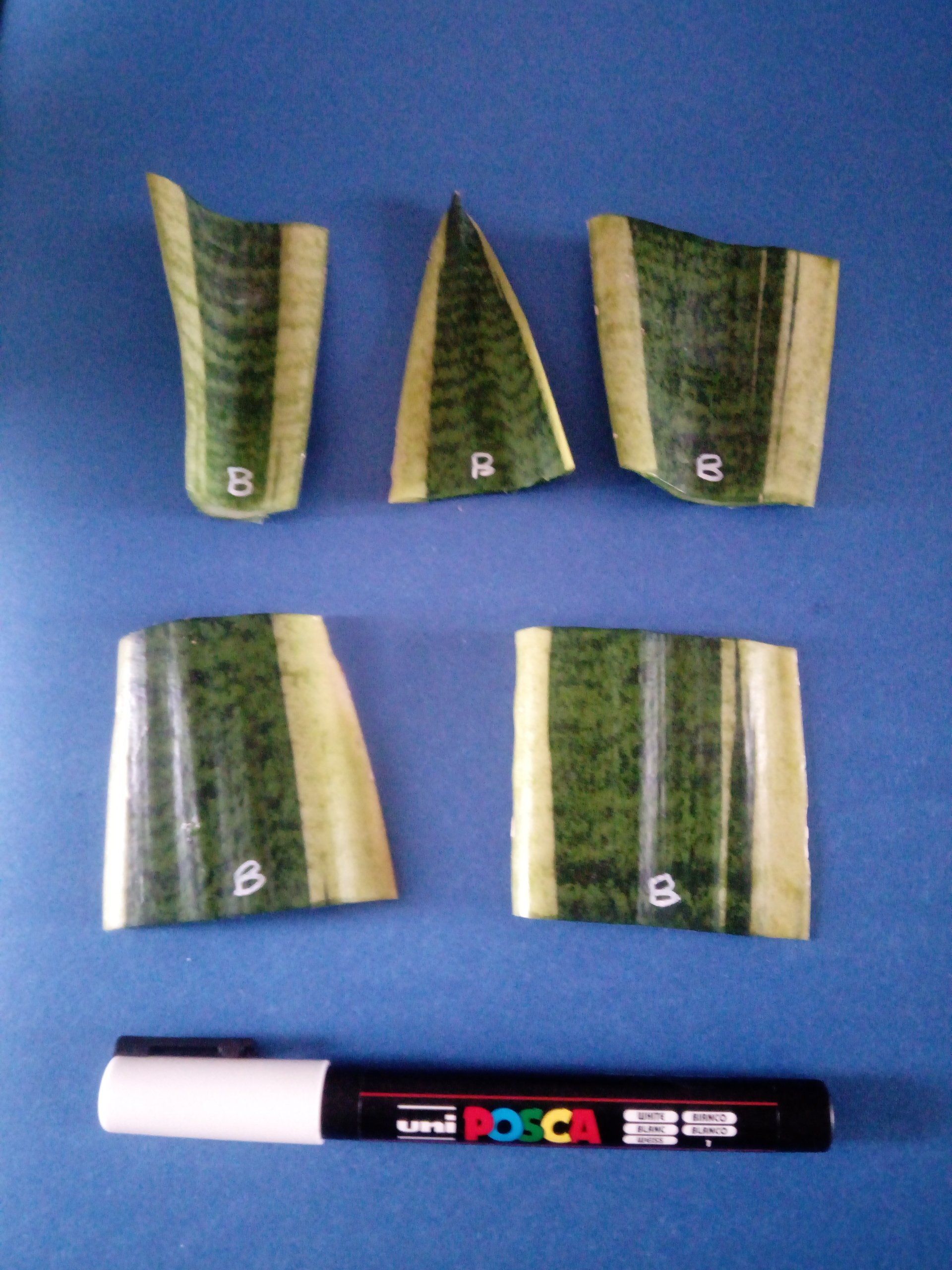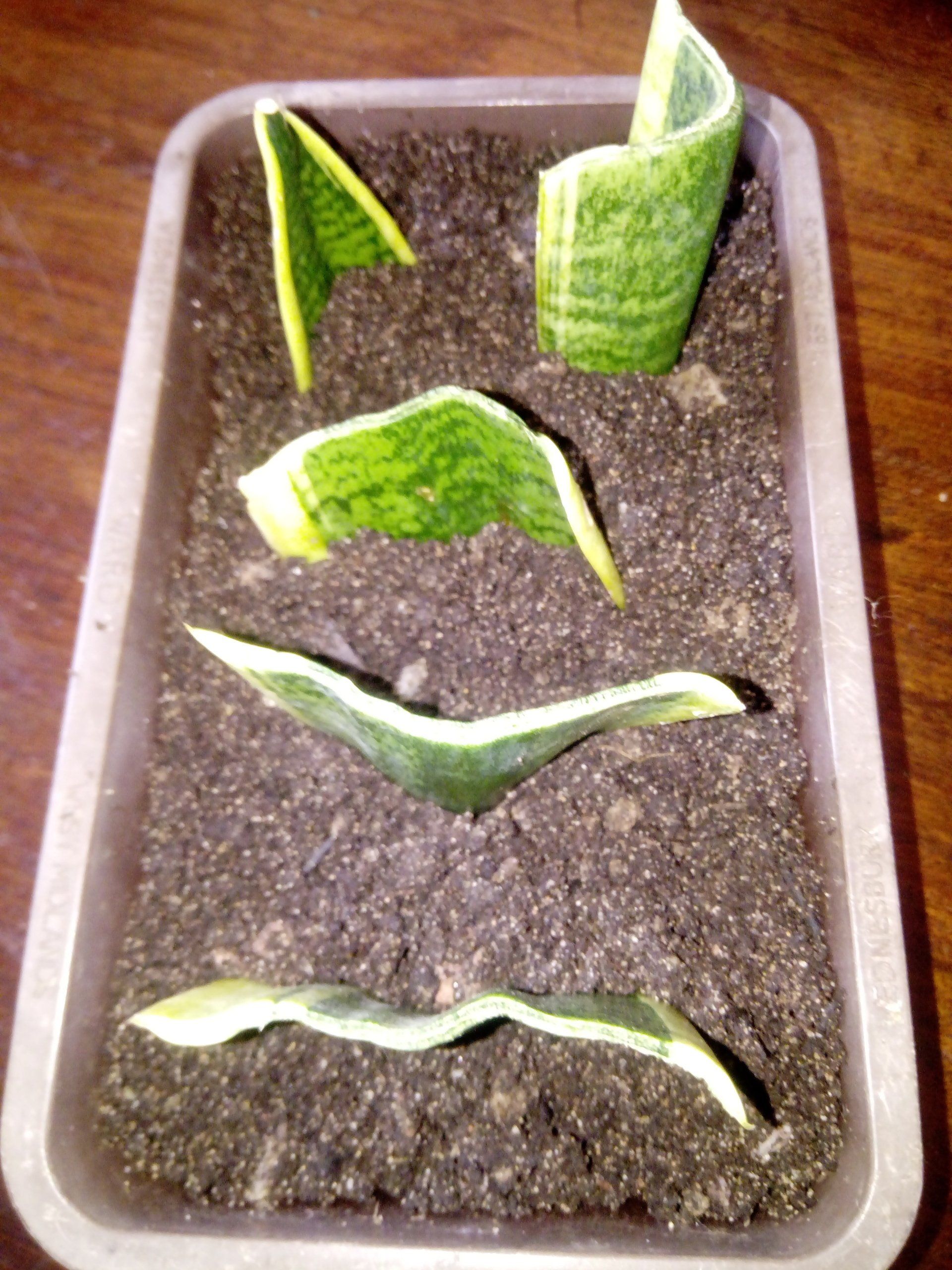Taking Sansevieria (Mother in Law's Tongue) Leaf Cuttings
Sansevieria has a raft of common names that are descriptive of its looks. One of its most well known common names is Mother-in -Law's Tongue due to the leaves resembling a pointed tongue! (So it might not be an ideal gift for the Mother in Law!). It is also known as The Snake Plant, Snakes Tongue and Devil's Tongue. It is grown for its striking foliage and architectural looks, but is one of the easiest houseplants to grow, so it is ideal if you are new to growing plants indoors, are in student accommodation, are away a lot or just love succulent plants. However, what is less known are the health benefits of Sansevierias - it is one of the best houseplants you can have to remove harmful pollutants from the air.
Step 1
From your Sansevieria plant choose a healthy mature leaf that you want to take a cutting from. If you take leaf cuttings from the Sansevieria with the yellow leaf margins, Sansevieria trifasciata laurentii, (pictured), its offspring won't have the yellow margin, the leaf will just be green with the wavy internal markings.
Step 3
Cut the leaf into 5 cm (2 inch) sections. You will need to know which is the top and which is the bottom. If you plant the cutting upside down it will not root. They look very similar either way up so you need to mark the top or bottom in some way. I used a paint pen to write "B" for the bottom on each cutting.
Step 5
Fill a seed tray with a cacti or succulent compost (or use a multipurpose compost with added sand or grit). The compost needs to be free draining so that the cuttings do not rot.
Make a number of grooves in the compost so that you can insert the Sansevieria cuttings about 5 cm (1 inch ) deep.
They will take a few weeks to form roots and then you will need to wait a few months for plantlets to form at the base of the leaf cutting.
Not all the leaf cuttings will root, so you need to take a few to ensure success. (Division - where you split mature plants, is a more sure fire method, but this is more fun!).





